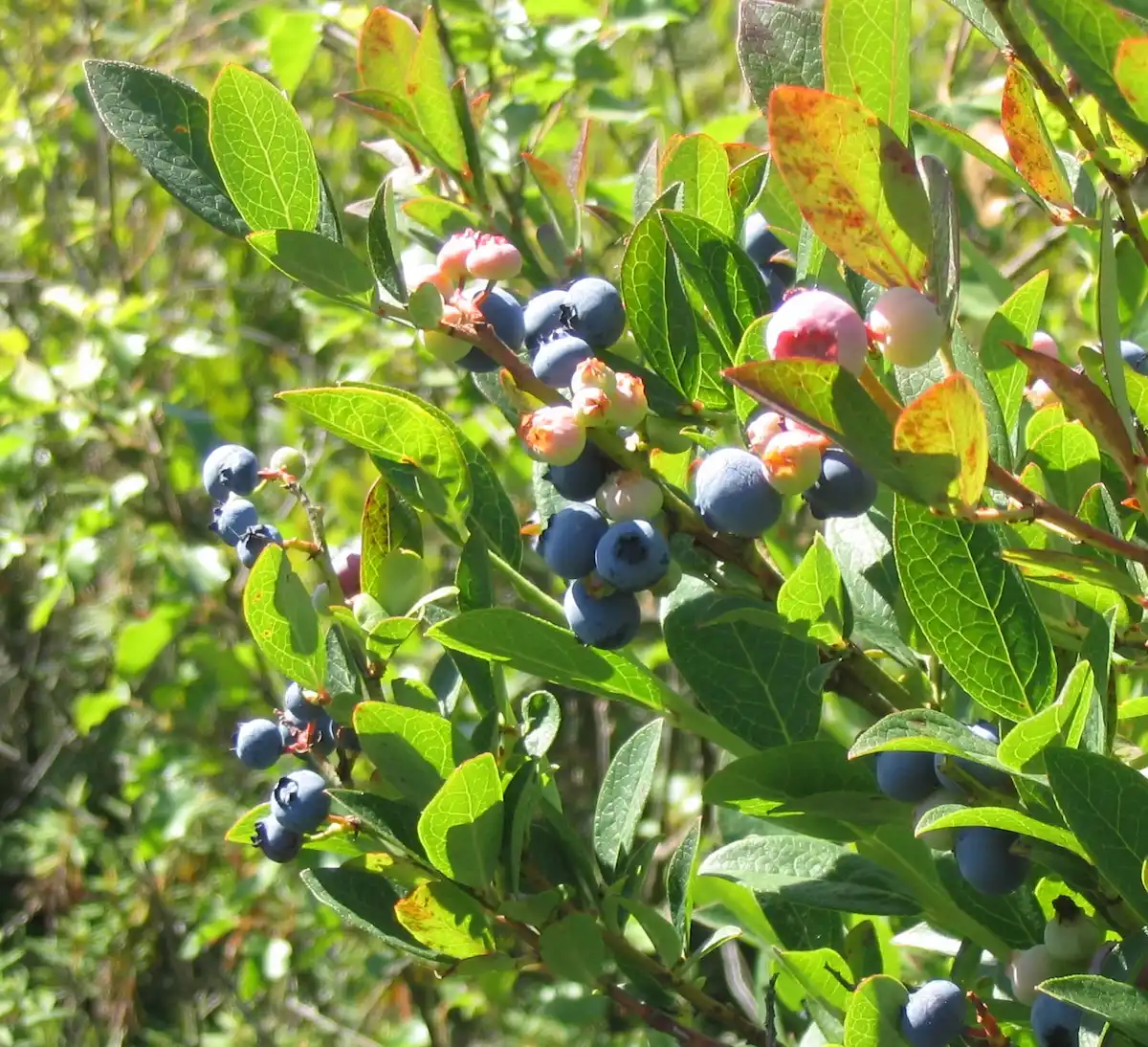How to Grow Highbush Blueberries

Meggar, via Wikimedia Commons
Highbush blueberries are a common fruit grown in home gardens that can be used fresh or frozen. Blueberry bushes are long-lived plants with a lifespan similar to that of fruit trees. The berries are versatile and can be enjoyed fresh, used in desserts, or stored by canning or freezing. In addition, the plants provide ornamental value with their delicate white blossoms in the spring and fiery foliage in the autumn.
Highbush Blueberry Uses and Benefits
It’s easy to forget how healthy blueberries are. The plant’s fruits, or berries, have a high iron content and are entirely edible, both raw and cooked. Additionally, you can bake or sun-dry them. In addition to being eaten fresh, blueberries can also be dried or baked for other purposes. Blueberries have a wide range of culinary uses, as evidenced by the frequent use of frozen or pureed blueberries to make jams, preserves, and a variety of delicious baked goods.
Blueberries have few calories. They do, however, contain essential phytonutrients that are good for the body, such as soluble dietary fibre, vitamins, minerals, and antioxidant pigments, which greatly contribute to optimum health and wellness.
Planting Vaccinium Corymbosum
The initial steps in caring for highbush blueberry plants are choosing the best location and amending the soil. Given that blueberries are perennials, you will benefit in the long run by taking good care of them now. They produce enormous, meaty, and luscious fruits that are absolutely delicious. The flavour is only one of their many benefits, though.
Soil
A sandy loam that drains well and is rich in organic matter is ideal for growing blueberries. Blueberry-friendly clay soils can be created by incorporating organic material (like peat moss) and sand. Blueberries can be grown on ridges 4 inches above the surrounding soil level in extremely poorly drained soil.
Light
Blueberries need full sun for the best yield and quality (six to eight hours of sunlight per day). They thrive in areas with very acidic soil and plenty of precipitation. Greater than 3% organic matter and a pH of 4.5 to 5.0 are ideal conditions for soil.
Sunlight is essential for the growth of highbush blueberries. Make sure there are no trees or decorative shrubs next to the blueberry bush if you want to grow one of these plants in your garden. It’s an especially crucial component when the bush starts to produce fruit. They ripen more quickly and become juicier and sweeter in the sun.
Watering
Because of their thin root systems and high sensitivity to water changes, highbush blueberry bushes, Berry size, and overall output will suffer if water is scarce at any point when the fruit is developing. The plants don’t wilt when dry and have leathery leaves; instead, they start to die one branch at a time. Plants for highbush blueberries need at least one to two inches of water per week.
A soaker hose is a great tool for providing water to blueberry plants. Supplemental watering is necessary during the growing seasons to ensure strong fruit yields of superior quality. After harvest, it is crucial to keep the soil moist until late in the summer. Due to the fact that flower buds for the following year form in late August and early September, drought stress at this time will diminish yields. In the fall, much less water is required. Ensure that the soil is moist but not soggy. Once the leaves have fallen in the late fall, there is no need to water the plants.
Fertilizers for Highbush Blueberry
Many people ask if blueberry plants, like highbush blueberries, require feeding. While it is avoidable, doing so won’t yield the same positive outcomes as employing a variety of nutrient-rich goods. The plant should be supported, especially during its active growth phase. It starts in March and runs through the end of June or the start of the summer.
Fertilizers with a high nitrogen content are required for high-bush blueberries. Additionally beneficial are ammonium nitrate and other goods with phosphorus and potassium additives. If you don’t want to take a chance, simply look for specialized mixes made only for this plant; you may get them in gardening supply stores.
Pruning Blueberries
Blueberry bushes should be pruned in the winter for the best results.
Pests and Prevention
Pests can occasionally cause major issues. The list of the most frequent blueberry pests is below, along with links to resources for handling them. Unprotected fruit is routinely eaten by birds. The best technique of control is netting, which is available at garden supply retailers. In order to keep the netting in position and away from the plants, a permanent post and framework are typically constructed.
Companion Plants
The pH of the soil should be low when planting highbush blueberries. The plant can therefore be classed with others that have comparable requirements, such as hollies, azaleas, rhododendrons, and camellias. Herbs like basil, thyme, and parsley, blooming plants like borage, columbines, hydrangeas, and lilacs, and other fruits like strawberries and cranberries are all excellent blueberry bush companions.

